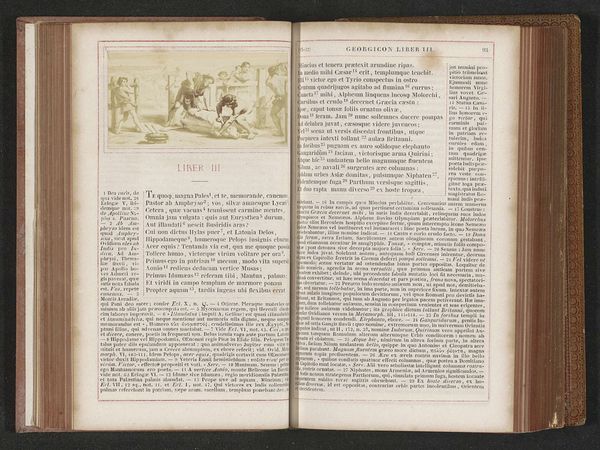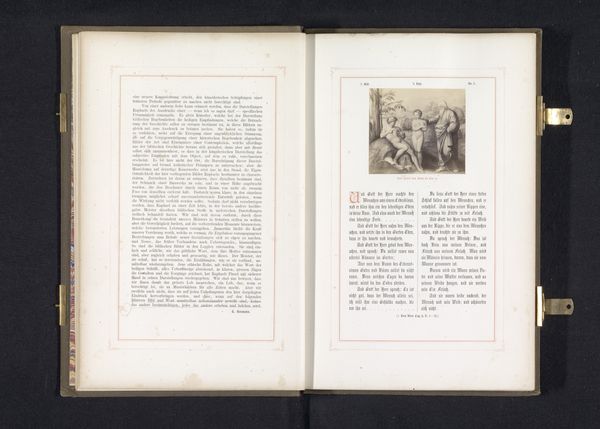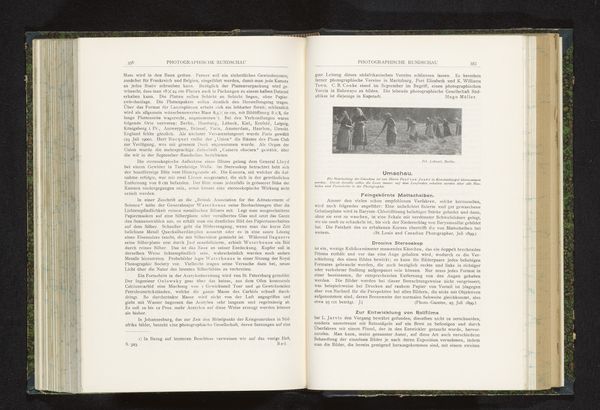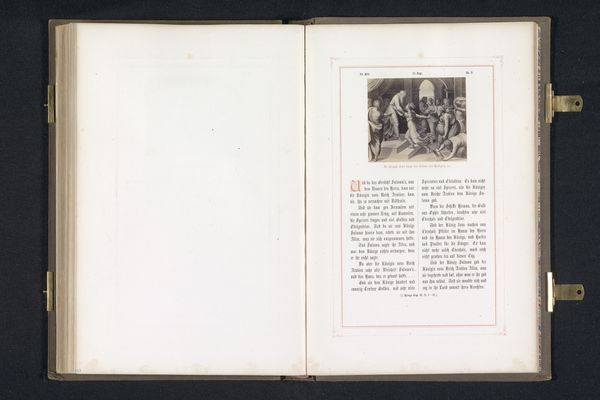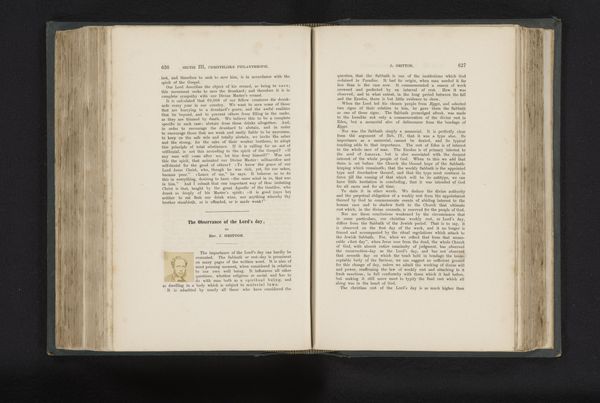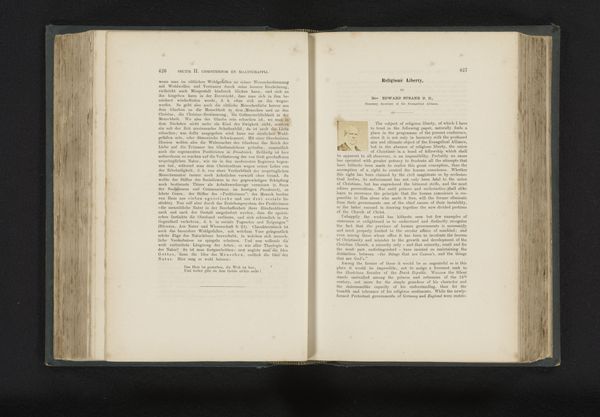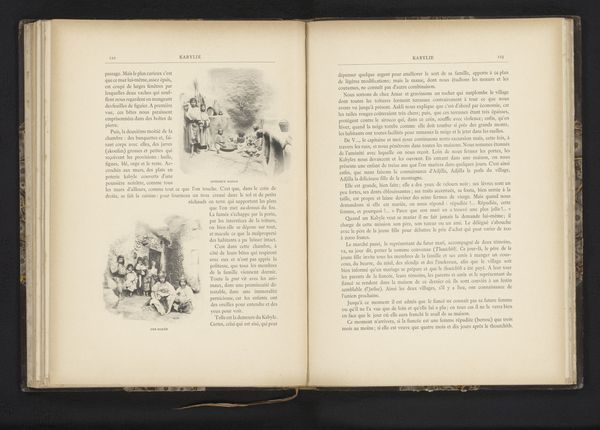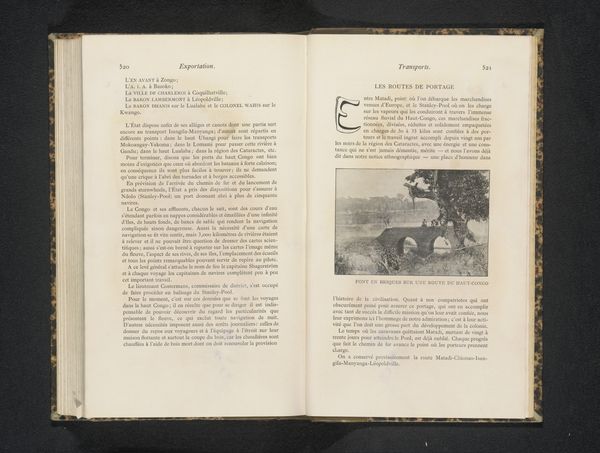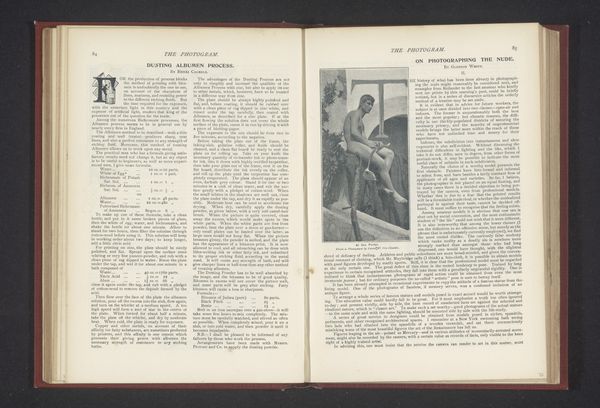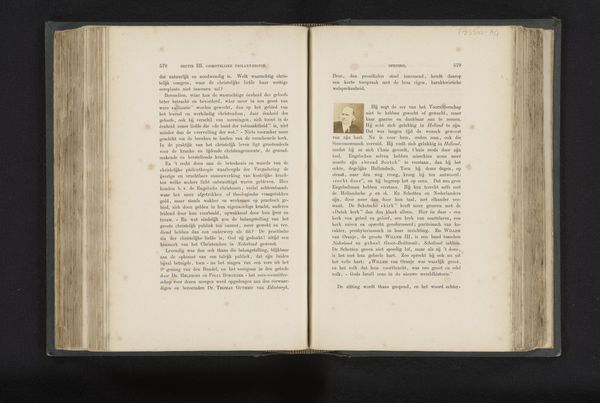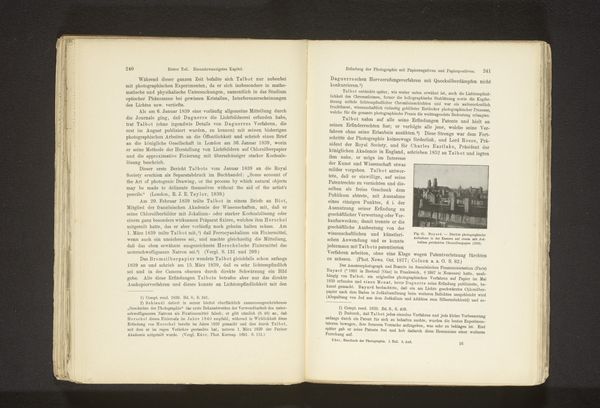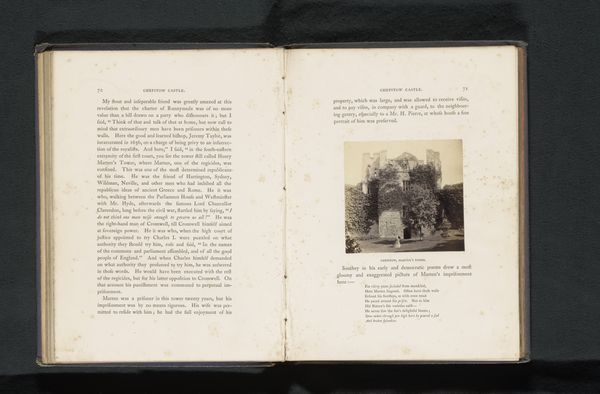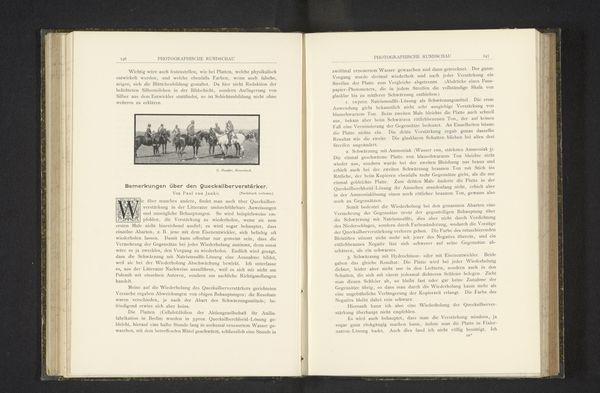
Fotoreproductie van een schilderij, voorstellende de tweestrijd van Turnus en Aeneas before 1858
0:00
0:00
print, engraving
# print
#
book
#
history-painting
#
engraving
Dimensions: height 31 mm, width 61 mm
Copyright: Rijks Museum: Open Domain
Editor: Here we have "Fotoreproductie van een schilderij, voorstellende de tweestrijd van Turnus en Aeneas," or, roughly translated, "Photographic reproduction of a painting depicting the duel of Turnus and Aeneas," made before 1858 by an anonymous artist. It seems to be an engraving in a book. There's something almost claustrophobic about how this grand, historical scene is framed within the pages of a book. Curator, what catches your eye in this work? Curator: Well, given that it's a reproduction within a book, the framing, as you mentioned, is significant. How does placing this image of a legendary, foundational myth—the conflict between Aeneas and Turnus from Virgil's Aeneid—within a book impact its reception and understanding by the public? Is it about democratizing access to high art, or something else entirely? Editor: That's interesting. It makes me think about how the story itself is being consumed, like knowledge gained from books, perhaps? Were these types of illustrated books common at the time? Curator: Yes, illustrated books were becoming more accessible during the 19th century, particularly with advancements in printmaking like engraving. The book as a medium shaped how people encountered history and culture. Who do you think would typically be engaging with this specific kind of historical imagery in the mid-19th century? Editor: Probably an educated, upper-middle class audience with an interest in the classics and national identity. It makes me consider the relationship between art, literature, and social status. Curator: Exactly. It served as a marker of cultural capital. And considering that it depicts a battle, perhaps the book subtly promotes particular ideals surrounding warfare, masculinity, and the Roman ideal which often played a role in creating nationalist ideologies. Did the rise of nationalism play a role here? Editor: I hadn't considered the possible nationalist overtones before, but the context you provided clarifies so much! Thank you. Curator: It was my pleasure. Reflecting on how the presentation and circulation of images—even through books—were tied to specific social and political agendas is key.
Comments
No comments
Be the first to comment and join the conversation on the ultimate creative platform.
